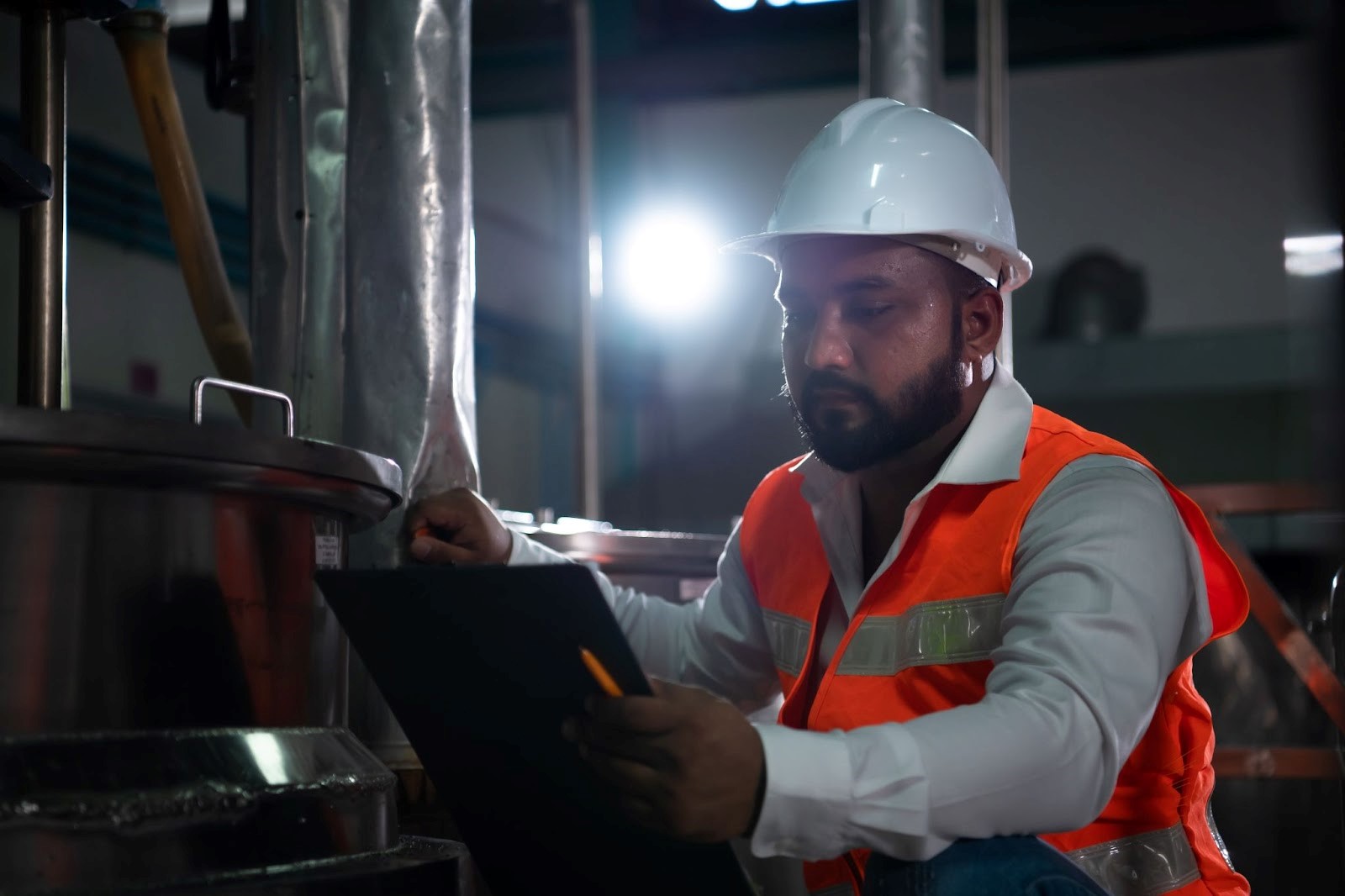Why The Annual Fire Safety Inspection Is Essential For Your Business
The whirring of machinery, the rhythmic clang of metal on metal – it’s the symphony of a bustling manufacturing floor. But amidst the controlled chaos, a single, unforeseen spark can ignite a nightmare scenario. Imagine flames engulfing vital equipment, employees scrambling to evacuate, and your entire operation grinding to a halt. But what if a simple, proactive measure could significantly reduce this risk? That’s the power of an annual fire safety inspection. For any NSW manufacturing business owner, an annual fire safety inspection is an essential investment, safeguarding your people, your assets, and your business continuity.
Beyond Compliance: Protecting Your Production Line and Your People
While adhering to regulations mandated by the Environmental Planning and Assessment Act 1979 (NSW) and the 2020 updates to the Environmental Planning and Assessment Regulation 2000 (NSW) is crucial, the true value of an annual fire safety inspection extends far beyond avoiding fines. It’s a proactive approach to fire safety that prioritizes the well-being of your employees, the protection of your equipment and inventory, and the overall resilience of your manufacturing operation.
A Deep Dive: What Does a Fire Safety Inspection Cover in a Manufacturing Setting?
An annual fire safety inspection conducted by a qualified fire safety practitioner involves a meticulous assessment of your manufacturing facility’s fire safety systems and measures. Here’s a breakdown of some key areas they’ll scrutinise:
- Industrial Fire Hazards: The inspector will pay particular attention to common fire risks in manufacturing environments, such as flammable liquids, combustible materials, electrical wiring near machinery, and proper storage of hazardous chemicals.
- Fire Suppression Systems: Manufacturing facilities often rely heavily on sprinkler systems or fire hose reels. The inspector will meticulously examine their functionality, ensuring they are ready to operate effectively in the event of a fire.
- Emergency Exits and Signage: Clear and functional emergency exits and signage are crucial for a safe and efficient evacuation during a fire incident. The inspector will ensure these are unobstructed, well-lit, and comply with relevant Australian Standards.
- Fire Extinguishers: Fire extinguishers are your first line of defence against a small fire. The inspector will verify their placement, accessibility, and functionality. This includes confirming the extinguishers are the right type for the potential fires in your facility and that they haven’t expired.
- Electrical Safety: Manufacturing environments often have complex electrical systems. The inspector will be on the lookout for potential electrical hazards like overloaded circuits, damaged wiring, or faulty equipment that could spark a fire.
- Staff Fire Safety Training: The inspector will review your staff fire safety training procedures. Ensuring your employees are familiar with fire safety protocols, evacuation procedures, and proper extinguisher use is critical for a safe response to a fire emergency.
- Fire Safety Documentation: The inspector will review your fire safety documentation, including your fire evacuation plan, staff training records, and maintenance logs for fire safety equipment. This ensures you have the proper procedures in place for a safe and orderly evacuation.
Cost Considerations: Why There’s No Fixed Price Tag
The cost of an annual fire safety inspection for a manufacturing facility can vary depending on several factors, including:
- Size and Complexity of Your Facility: Larger facilities with more intricate fire safety systems and potentially hazardous materials will require a more comprehensive inspection, leading to a higher cost.
- Manufacturing Processes: The specific fire risks associated with your manufacturing processes will influence the scope and complexity of the inspection. For example, a facility working with flammable chemicals might require a more in-depth inspection compared to a metal fabrication workshop.
- Frequency of Inspections: While annual inspections are the norm, some manufacturing facilities with high fire risks or specialised equipment might require additional inspections based on specific regulations.
Investing in Resilience: The Benefits Outweigh the Costs
While the cost of an annual fire safety inspection can vary, the long-term benefits significantly outweigh the initial investment. Here’s a quick recap for manufacturing businesses:
- Reduced Risk of Fire: Regular inspections help identify and address potential fire hazards before they can cause a production shutdown or endanger your employees.
- Compliance with Regulations: A current AFSS, issued based on a successful inspection, demonstrates your commitment to fire safety compliance and can help avoid hefty fines.
- Lower Insurance Premiums: Many insurance companies offer premium discounts to businesses with demonstrably robust fire safety plans.
- Business Continuity: A fire incident can significantly disrupt production and cause substantial financial losses. Regular inspections minimise the risk of disruptions and ensure a faster recovery in case of a fire.
- Employee Safety: Knowing your fire safety measures are in top condition fosters a sense of security for your employees and helps ensure their peace of mind, and safety.
Partnering for a Fire-Safe Future: The Final Step
An annual fire safety inspection is not just a regulatory requirement; it’s a proactive investment in the safety of your employees, your equipment, and your entire manufacturing operation. By partnering with a qualified fire safety practitioner, you gain a valuable ally in your fire safety journey. They can provide expert guidance on addressing any identified hazards, ensure your fire safety plan is up-to-date, and offer recommendations for ongoing maintenance to keep your systems functioning optimally.
Finding the Right Fire Safety Partner
Here are some key factors to consider when selecting a qualified fire safety practitioner for your NSW manufacturing facility:
- Experience in Manufacturing: Look for a practitioner with experience working in manufacturing environments. They’ll have a deeper understanding of the specific fire risks associated with your industry and can tailor their inspection accordingly.
- Qualifications and Accreditations: Ensure the practitioner holds the necessary qualifications and accreditations under the relevant NSW scheme to conduct fire safety inspections for commercial buildings.
- Range of Services Offered: Seek a practitioner who offers a comprehensive range of services beyond just inspections. This could include fire risk assessments, staff fire safety training programs, and ongoing maintenance plans for your fire safety systems.
- Communication and Customer Service: Choose a practitioner who prioritises clear communication and exceptional customer service. They should be able to explain their findings in a clear and understandable manner and be readily available to answer any questions you may have.
By conducting annual fire safety inspections and partnering with a qualified fire safety practitioner, you can create a robust fire safety strategy for your NSW manufacturing business. This proactive approach minimises the risk of fire incidents, protects your employees and assets, and ensures the continued success of your operation.




